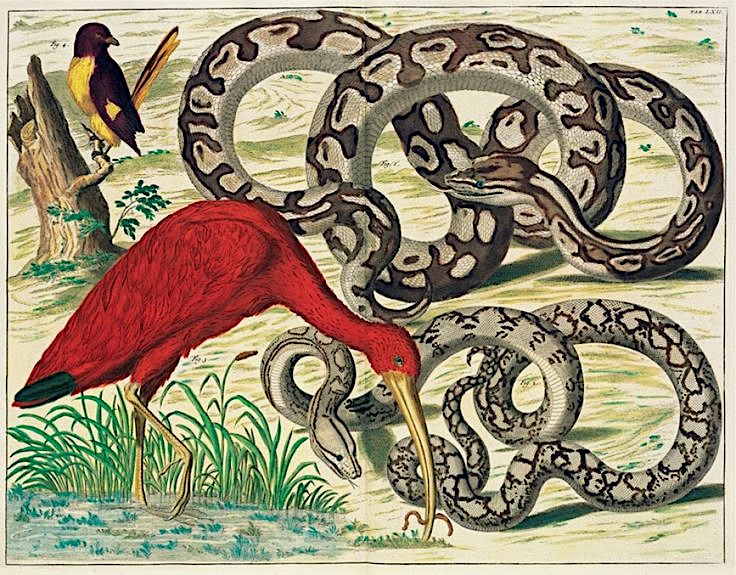It is precisely the possibility of exercising choice wherein our lot differs from that of the artists of the past. For choice implies responsibility to one’s conscience, and, in the conscience of the artist, the Truth of Art is foremost. — Mark Rothko
Born Marcus Rothkowitz in 1903, the painter Mark Rothko immigrated with his family from Russia at age 10, fleeing the persecution of Jews in his home country. He grew up poor in Portland, Oregon, won a scholarship to Yale in 1921, but “found himself once more an outsider, stigmatized as a Jew,” says James Payne in the Great Art Explained video above. Feeling alienated and disaffected, he dropped out and moved to New York (to the dismay of his family), “to wander around,” he later wrote, ”bum about, starve a bit,” and paint. He co-founded a group of modern artists who exhibited frequently together and won critical attention, but Rothko struggled financially into middle age and only began selling his work during the “color field” period that made him famous in the 1950s.
It wasn’t until 1958 that Rothko received his first major commission, for what would become the Seagram Murals, so-called because they were meant for the luxurious Four Seasons restaurant in the newly-built Seagram Building on Park Avenue, a glittering symbol of New York’s opulence, designed by architects Mies van der Rohe and Philip Johnson and filled with paintings by Rothko’s contemporaries. Rothko spent two years working on the project, a series of paintings to fill the restaurant’s smaller, exclusive dining room. He produced a total of 30 panels, seven of which were to fit together in the restaurant. Then, almost two years after receiving the commission for $35,000 (roughly $334,000 today), he abruptly changed his mind, returned the money, and withdrew the works.
Ten years after Rothko’s decision, “on the 25th of February 1970,” Payne tells us, “the Tate gallery in London received nine Mark Rothko canvases” — panels from the Seagram Murals collection — “a generous donation from the artist himself. A few hours later, Rothko was found dead in his studio on East 69th Street in Manhattan. The 66-year old painter had taken his own life…. His suicide would change everything, and shape the way we respond to his work.” But perhaps it’s not that tragic event that best provides us with an understanding of the artist’s motivations. “Rothko’s contract with society was not torn up that day in 1970,” argues Jonathan Jones at The Guardian, “but a decade earlier, in 1959,” when Rothko, “intense, solitary, leftwing, used to poverty and failure,” conceived of an art to “harrow” well-heeled diners at the Four Seasons.
Rothko explicitly modeled the Seagram Mural project after what he called the “somber vault” of Michelangelo’s Laurentian Library in Florence, which he visited on a trip to Italy in 1959. “He achieved just the kind of feeling I’m after,” said Rothko. “He makes the viewers feel that they are trapped in a room where all the doors and windows are bricked up, so that all they can do is butt their heads forever against the wall.” Abandoning the brighter color schemes of his past works, he turned to blacks, reds, and maroons, a palette drawn from mosaic walls he’d seen in a Pompeiian villa. Rothko reportedly told journalist John Fischer, an editor at Harper’s, “I hope to ruin the appetite of every son of a bitch who ever eats in that room.” Aware of how his color field paintings moved viewers, often to tears, he hoped the murals would amplify the effect to an unpalatable degree.
Instead, when Rothko himself dined at the Four Seasons for the first and only time, he spoiled his own appetite for the commission. “Anybody who will eat that kind of food for those kinds of prices will never look at a painting of mine,” he told his assistant. That very evening he withdrew the paintings. “The fact that Rothko accepted the commission in the first place is puzzling,” Shira Wolfe writes at Artland. “He was revolted by capitalist America, and felt disdain towards anyone who contributed to it – and the Four Seasons Restaurant, in New York’s swankiest skyscraper, was destined to become the very epitome of America’s capitalism.” From its beginnings, the artist “felt ambivalent about the commission, and had a contract drawn up which would allow him to back out of the deal and retrieve his paintings if necessary.”
It was the necessity of choice, even in the face of poverty and obscurity, that most moved Rothko, as he wrote in a manuscript from the 1940s, posthumously published by his son Christopher Rothko as The Artist’s Reality: Philosophies of Art. In the book, Rothko contrasts the modern artist’s fate with that of artists of the past who lived by the whims of dukes, kings, and popes.
It will be pointed out that the artist’s lot is the same today, that the market, through its denial or affording of the means of sustenance, exerts the same compulsion. Yet there is this vital difference: the civilizations enumerated above had the temporal and spiritual power to summarily enforce their demands. The Fires of Hell, exile, and, in the background, the rack and stake, were correctives if persuasion failed. Today the compulsion is Hunger, and the experience of the last four hundred years has shown us that hunger is not nearly as compelling as the imminence of Hell and Death. Since the passing of the spiritual and temporal patron, the history of art is the history of men who, for the most part, have preferred hunger to compliance, and who have considered the choice worthwhile. And choice it is, for all the tragic disparity between the two alternatives.
Rothko was “obviously torn between his hatred for the wealth and greed of capitalism and his desire to create his own special place for his art,” writes Wolfe. In the year after his death, just such a place would open, a mural project that realized a very different set of intentions.
Originally a collaboration between Philip Johnson and Rothko – until the architect bowed out due to the painter’s peculiar vision – the non-sectarian Rothko Chapel in Houston debuted in late February 1971. An octagonal, cloistered building with fourteen large Rothko murals, the Chapel was commissioned by collector and patron Dominique de Menil when she saw the Seagram Murals taking shape in Rothko’s purpose-built New York studio. It’s possible, and perhaps morbidly tempting, to judge Rothko’s work by the tragedy of his final personal act, but he had more to say in his work after death. In the Seagram Murals, Rothko attempted to realize a philosophy of art he had articulated years earlier in The Artist’s Reality: “The law of Authority,” whether that of the Church, the State, or the Market, “has this saving grace; it can be circumnavigated.”
Related Content:
Watch the Tate Modern Restore Mark Rothko’s Vandalized Painting, Black on Maroon: 18 Months of Work Condensed Into 17 Minutes
Great Art Explained: Watch 15 Minute Introductions to Great Works by Warhol, Rothko, Kahlo, Picasso & More
The MoMA Teaches You How to Paint Like Pollock, Rothko, de Kooning & Other Abstract Painters
Josh Jones is a writer and musician based in Durham, NC. Follow him at @jdmagness









